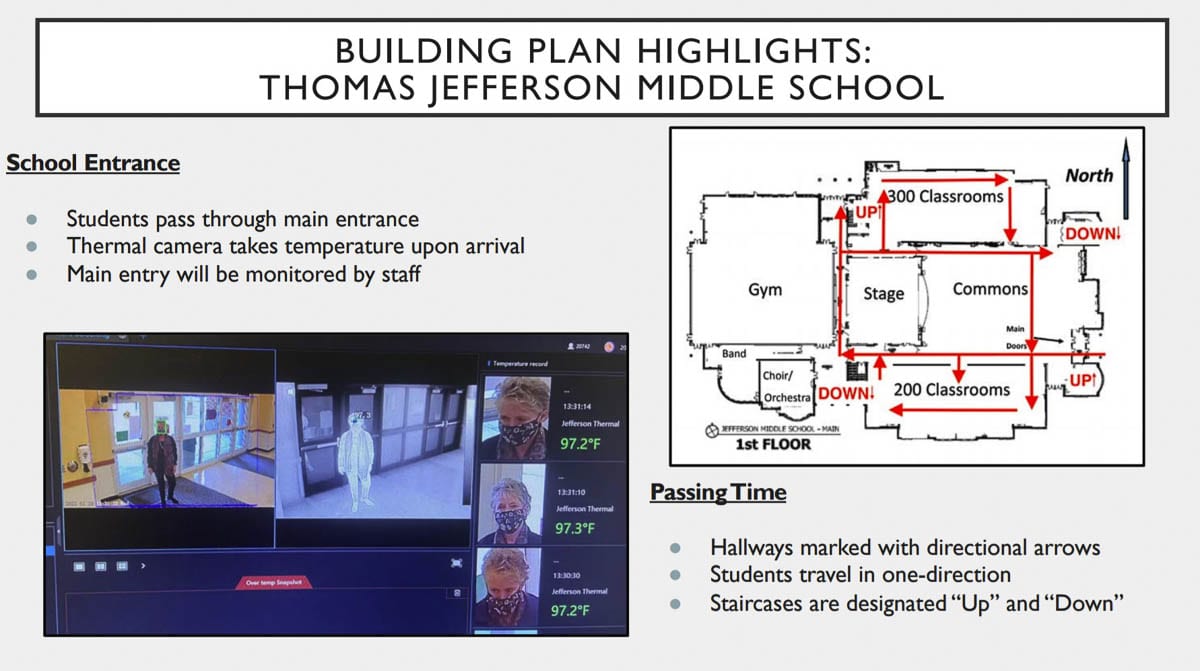If COVID case counts continue declining, sixth graders could return as soon as Feb. 16
VANCOUVER — Starting Monday, students in grades 3-5 will be welcomed back in the Vancouver Public School District, marking the completion of elementary grade level expansion into hybrid mode.
Students whose parents choose to send back will attend classes two days a week, with Group A attending Mondays and Tuesdays, while Group B goes Thursday and Friday. Wednesday will be reserved for remote learning, as well as time for teacher in-service days.
For most schools, hours will be from 8:30 a.m. to 1:50 p.m., while Lincoln and Minnehaha Elementary schools will be from 9:10 a.m. until 2:30 p.m.

The district has also opened up classrooms for students in higher grade levels who are at-risk, or struggling to keep up their grades.
“We have not had one single COVID positive student transmission case in our schools,” Vancouver Superintendent Steve Webb told the school board during a work session this week. “We have had four positive staff transmission cases at district sites, all of those four have been identified as adult-to-adult transmissions.”
Under state guidelines issued Dec. 18, COVID case rates must be below 350 per 100,000 in order to allow 6-8 grade students back in classrooms.
The current rate is just over 401 per 100,000, but case numbers have continued to decline in recent days.
Should the rate dip to 350 or less next week, the soonest sixth graders could return to classrooms would be Feb. 16.
Seventh and eighth graders would return the following week.
“We’re hopeful that we’ll be in a position in February to transition grades six through eight, and March to transition grades nine through 12,” said Webb. “Of course that is contingent upon those metrics being met county wide.”
Systems in place to protect students and teachers will look similar to what’s being used at lower grade levels.
That includes a health questionnaire for parents to fill out using an app, along with the use of infrared cameras and other checks once students arrive at school.
Students who show up with a temperature over 99.7 will be removed to an isolation room, where they will eventually be tested again. If they still fail to pass, a family member will need to come pick them up.
Mask use will be required, except during meal times, and students will find markings in most hallways and stairwells, in order to prevent them passing each other as they move between classes.
The lunchroom at Discovery Middle School, for instance, would include multiple students at a table, but with a plexiglass divider between them. They would then move outside after eating so the tables could be sanitized.

High school grade levels couldn’t return until case levels drop below 200 per 100,000 people over a two-week period. Ninth grade students would return a week before 10-12.
Columbia River High School Principal Alex Otoupal said they’ve been working non-stop since December to put a plan in place.
“We’ve invited our safety committee and our staff to take a look at our plans as transparently as possible, invited folks to come in and punch holes in the plan,” Otoupal told the board. “As a process, so that they can identify questions that may come up, doubts or concerns that they might have that we can address early on.”
Columbia River has had close to 40 students on campus already, allowing them to test out some setups, and figure out what works and what doesn’t.
Otoupal said one change has been working to make better use of space like gyms and cafeterias to spread students out more in a single space.
“Everything I’ve seen so far with students who have been able to come on campus, they’ve been hyper sensitive to what we expect,” Otoupal said, “and super responsive to directions and expectations.”
Jim Gray, the district’s executive director for secondary programs cautioned that scheduling students, especially those in advanced placement programs, continues to be a delicate balancing act.
“Scheduling is content area based, necessitating the need for teachers to have specific grade level and content area endorsements,” Gray explains. “Scheduling also relies on student specific class elections that meet their individual needs, career pathways, or passion area exploration.”
The need for many students at those grade levels to move from one content area to another, said Gray, means allowing some teachers to remain remote, while others are in classrooms, is just “not scalable,” and would require a full rebuild of master schedules in the midst of a grading period.
Students with family members who may be at risk would need to take final exams remotely, Gray said, to allow space for other students.
Students will also have the opportunity to remain in full remote, or sign up for the Vancouver Virtual Academy through the Lieser campus.
Details on the district’s evolving reopening plan are available online.
The full Jan. 26 Board work session can be viewed below:




